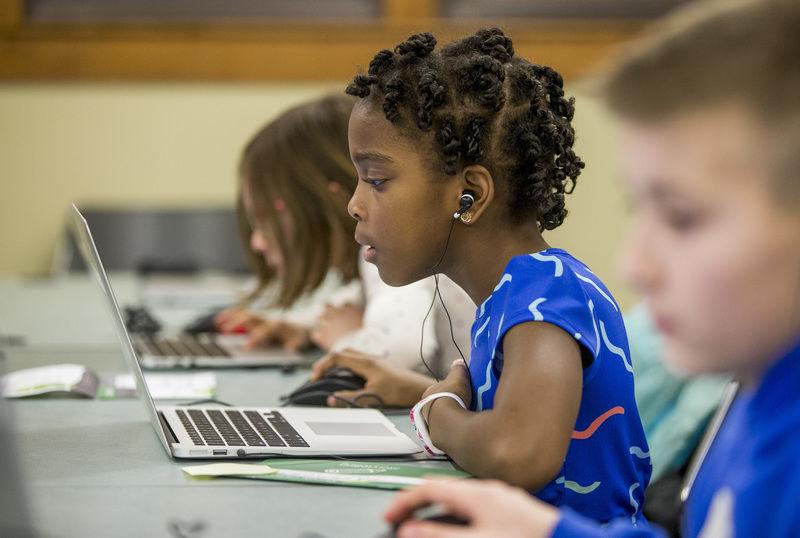
16 Sep How Businesses Can Help Close the Homework Gap
Published: 9/16/2021
Although most students in the United States have returned to in-person learning, the harshest part of the digital divide persists—the homework gap. While the digital divide has been around for years, it was thrust into the spotlight during the COVID-19 pandemic. In 2018, nearly 17 million children lived in homes without high-speed internet. Additionally, more than 7 million did not have computers at home, as reported by Future Ready.
The homework gap is the chasm between students who have access to computers and the internet, and those who don’t. It not only affects a student’s ability to complete homework, but also can hinder:
- Overall academic success
- Ability to graduate from high school
- Foundation for a fruitful career
- Economic opportunities
With no access to virtual classrooms during the pandemic, public spaces became a popular place for remote learning and for students to complete homework assignments. The New York Times reported that students who lacked reliable internet access were learning in parking lots connected to Wi Fi buses.
While it’s a multifaceted issue, businesses have an opportunity to start making an impact on closing the homework gap today.
Students Most Affected by the Homework Gap
The homework gap is especially concerning for students of color and those in lower-income households in rural areas. Research from the National School Boards Association, (NSBA) states 96 percent of school districts say that at least some teachers assign homework, which requires internet use to complete.
Even before the pandemic, some lower-income teens say they lacked the resources to complete schoolwork at home. According to Pew Research, about one-in-five teens say they cannot complete homework assignments because they have no reliable access to a computer or internet.
Black teens and those living in lower-income households were more likely to say they can’t complete homework assignments for this reason. A quarter of lower-income teens don’t have access to a home computer. One-in-four teens in households with an annual income under $30,000 lack access to a computer at home, compared with just 4 percent of those in households earning more than $75,000.
Current Efforts for the Homework Gap
As stated by Common Sense Media, solutions have largely been temporary measures, with more than 75 percent of these efforts expiring in the next one to three years.
Long-term solutions must address all three root causes of the divide:
- Lack of available broadband access
- Lack of affordability
- Non-technical, non-financial barriers to adoption such as lack of digital skills or distrust of providers
Cross-sector partnerships among public, private and social sectors are essential to close the K-12 digital divide permanently.
NSBA recently issued an action alert urging school board members to contact their representatives in Congress. They’re asking them to support the inclusion of $10 billion in the FY2022 budget reconciliation package. This bill is currently under negotiations in Washington, to help close the homework gap.
Earlier this year, the Federal Communication Commission kicked off an emergency effort to get more students connected for school. To help close the homework gap, it released a Public Notice asking for input on petitions filed with the agency seeking support from the E-Rate program.
Businesses Can Help Close the Homework Gap
However, much more work needs to be done to help close the homework gap for students in need, especially with the support of businesses. A business is in a unique position to make a major dent in closing the homework gap because of its backlog of retired IT, in addition to having access to idle devices through its employees. It’s estimated that there are millions of unused and retired IT devices “collecting dust” in U.S. businesses and homes.
Imagine if all of those devices could be recertified for K-12 students in need to complete their homework this school year?
The PlanITROI Digital Dreams Project (DDP) turns retired, returned, idle IT devices into technology solutions for low-income families. Through its non-profit collaborations, including Take On Race and Microsoft’s Airband Initiative, PlanITROI builds mission-driven partnerships. As a result, these organizations are creating a more digitally inclusive world by providing free and low-cost devices to communities of color.
Businesses can participate by directly trading in their device, making a financial contribution or initiating collections. PlanITROI offers a turn-key program with several participation levels, including virtual or in-person drives. In addition to impacting students in need, participating in DDP is an easy entry point into tackling digital inequity. It’s also an effective way to satisfy Corporate Social Responsibility goals.
A long-term, trusted partner to leading corporations, educational institutions, device OEMs and nonprofit organizations, PlanITROI has strict data security processes. Perfected over two decades, PlanITROI ensures that all data, on all devices, is completely erased to NIST 800-88 standards.
Do you want to learn more about how to help close the homework gap, by helping students in need get access to reliable technology solutions? Contact us today, to start the process.



Sorry, the comment form is closed at this time.